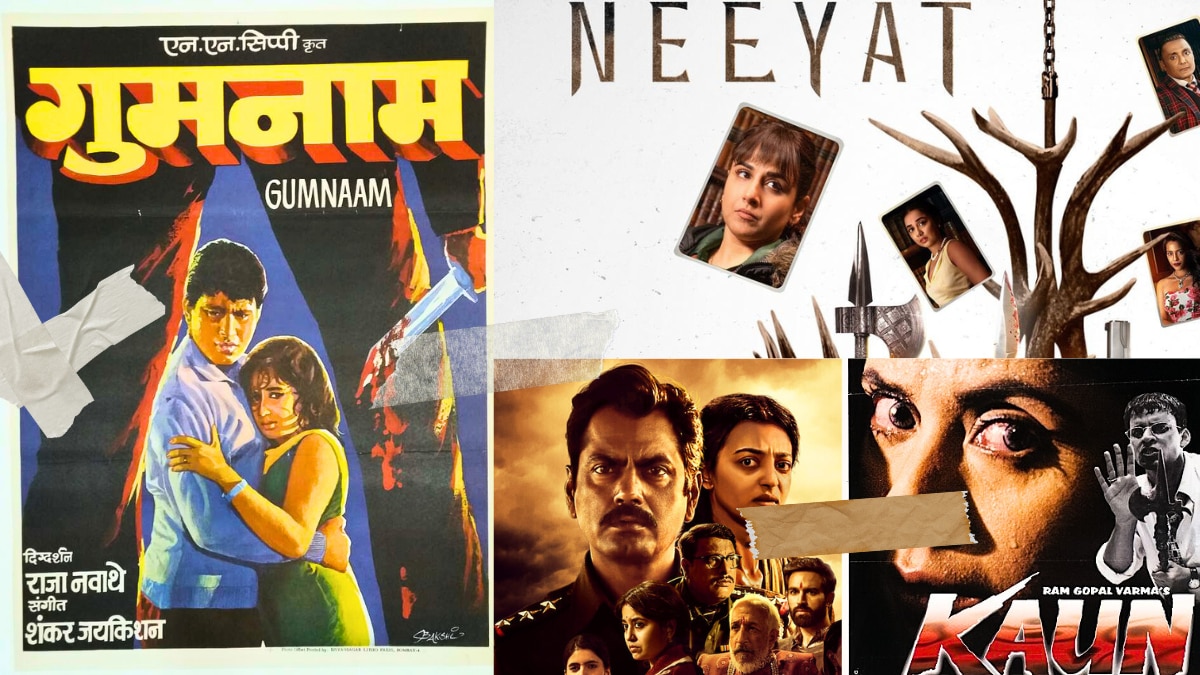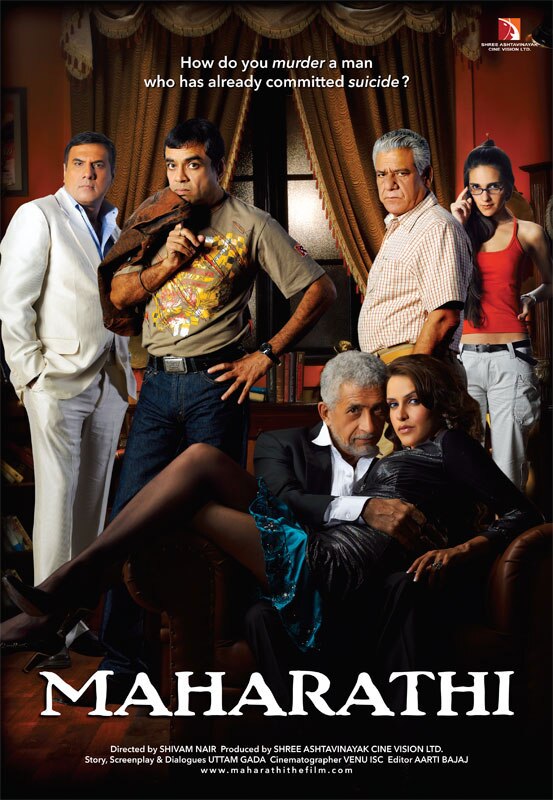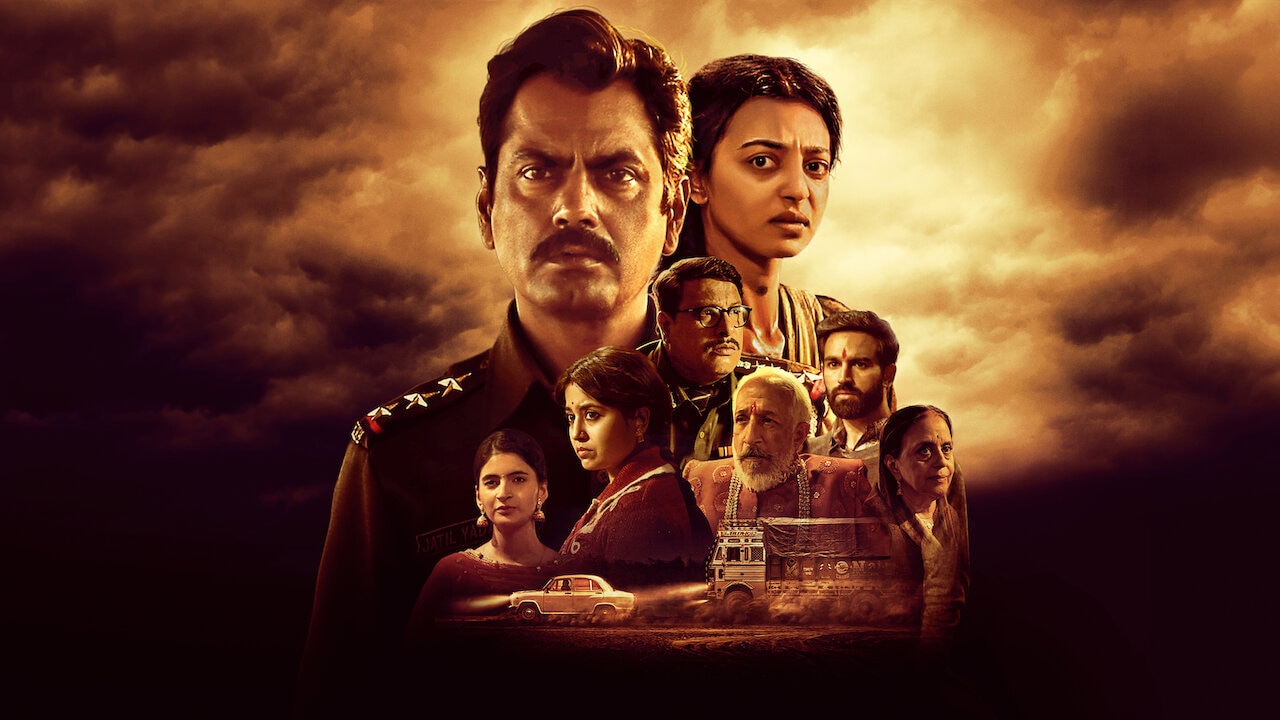A history of whodunnits in Bollywood before Vidya Balan's Neeyat

Before the new Vidya Balan whodunit drops on Prime, have a glimpse at Bollywood's best in this genre.
Vidya Balan returns to the big screen this Friday with a whodunnit mystery-thriller named Neeyat. And as the “who-done-it” formula goes, Neeyat also stars a diverse ensemble cast, each of whom are suspected of a murder. Serving as the Hercule Poirot/ACP Praduyman figure in this story, Balan plays a CBI officer named Mira Rao who investigates the alibi and motives of every other character. Ram Kapoor, Rahul Bose, Neeraj Kabi and even influencer-turned-actress Prajakta Kohli (aka “mostlysane”) join the cast.
The whodunnit genre, which was pioneered by Agatha Christie’s literature and refashioned with stylish modern thrillers like the Daniel Craig-led Knives Out movies, has had a humble run in Bollywood too. These include cult classics like Gumnaam and Kaun along with more recent titles like Netflix’s Raat Akeli Hai.
What sets a whodunnit apart from the usual B-Town cop dramas and serial killer stories is that they are mostly set around one particular murder and its intense aftermath. These are the Hindi movies that have drawn on this thriller subgenre and reinterpreted it in different scenarios.
Gumnaam was possibly Bollywood’s first whodunnit
Loosely inspired by Agatha Christie’s And Then There Were None (which itself has been adapted into numerous Hollywood classics), Gumnaam takes place in the course of a haunting night. The characters don’t know each other and show up at an enormous but spooky house after they unexpectedly win a trip to a foreign country.

The plot unravels after an obvious murder and continues thickening until each character beings dying one after the other. Gumnaam has little shock value to offer for modern audiences but it is an interesting throwback if you wish to understand how Hindi-language thrillers evolved over the years.
Perhaps even scarier than the movie is the spine-chilling title track sung by Lata Mangeshkar at her haunting best.
A younger RGV and Anurag Kashyap crafted an effective three-person whodunnit with Kaun
Before he was known for licking actresses' feet and drunk-tweeting, Ram Gopal Varma was an arguably iconic director. Following the success of gangster classics like Shiva and Satya, Varma helmed a low-budget thriller titled Kaun. Featuring Urmila Matondkar at the height of her fame and a lesser-known Manoj Bajpayee, Kaun is also notable for being one of Anurag Kashyap’s earliest screenwriting credits.
Much like how whodunnits go, Kaun is also set over a rainy night with Matondkar’s protagonist trapped inside her lavish bungalow of a house. With the news about a killer on the loose playing on, a terrifyingly manic Manoj Bajpayee shows up at her doorstep followed by a wooden Sushant Singh (AKA the moustachioed host of Savdhaan India).
While Bajpayee’s character reveals himself to be a stranger trapped in the downpour, Singh claims to be a police officer who is hunting down the killer. With both of their alibis being sketchy, it’s up to the heroine to decide who among the two can be the killer in question.

The dialogue-driven drama gives way to a shocking third act which even though might seem predictable is definitely well-acted by its limited starcast. With Kaun, Varma and his then-accomplice Kashyap proved an effective killer mystery can be woven with just a trio of characters.
Maharathi is arguably Bollywood’s most underrated whodunnit
While Kaun is still cherished among fans of RGV and Kashyap, an even more underrated Bollywood whodunnit is the 2008 thriller Maharathi. Based on a Gujarati play (which in turn was inspired by the 1956 crime novel There’s Always A Price Tag), Maharathi featured Naseeruddin Shah as a former director and Neha Dhupia as a failed actress and his wife.
It seems like Shah’s role is over when his character is revealed to have killed himself. But when a suicide note reveals his life insurance of Rs 24 crore, many players come into the scene to try out their luck at claiming the big prize. Think of it as a darker version of Dhamaal (that was released just a year earlier). Matters only get more complicated when Shah states in the note that his insurance can only be claimed if anyone can prove his suicide as an act of murder.

What’s unique about this thriller is that unlike other whodunnits, no cops are involved. The mandatory murder sets up the first act but everyone else are just twisted characters attached to the dead filmmaker in some way or the other. Paresh Rawal leads the ensemble with an understated performance as Neha Dhupia’s chauffeur. Evolving from an innocent driver to a manipulative opportunist, the actor elevated the whodunnit premise to a study of human psyche under pressure.
Manorama: Six Feet Under and Raat Akeli Hai localised the whodunnit genre
When theaters were shut in post-Covid 2020, Netflix India aimed to amp up its original movies. One of the more well-received titles during this time was Raat Akeli Hai, a Nawazuddin Siddiqui-starrer set in suburban Kanpur. The murder victim in this case is an influential politician who is last seen with a much younger girl.
Sticking to whodunnit conventions, the murder victim’s family seem to be hiding some dark secrets. And essaying the morally broken detective archetype, Siddiqui’s Inspector Jatil Yadav seems to be dealing with his own inner demons while obsessing over the murder case.
Raat Akeli Hai was also supported by a strong ensemble including the likes of Radhika Apte and Aditya Srivastava (CID’s very own Abhijeet). While the mystery thriller holds up on its own and even finds time to delve into the patriarchy and misogyny of the central family, Raat Akeli Hai is bound to draw comparisons with the Abhay Deol-starrer Manorama: Six Feet Under with which it seems to share thematic and visual similarities.

Released in 2007, Manorama is now treated as a cult classic when it comes to the Indian noir genre. Deol stars as a troublemaking cop at a small Rajasthani town. When he’s tasked by a mysterious woman to track the activities of her irrigation minister husband, the cop is drawn into a complex web of lies that stems from a nexus of murder, sexual abuse and political fraud. The usual murder happens a bit late this time but leads to more unprecedented chaos with numerous town figures on the cop’s list of suspects.
Diehard Hollywood cinephiles might sniff out some inspiration from this premise as Manorama is indeed thematically inspired by Chinatown (which is directed by Oscar-winning director and convicted rapist Roman Polanski). Much like the iconic American 1974 noir, Manorama goes beyond the constrictions of a typical whodunnit and incorporates a larger political mystery.
In what can be described as a full-circle moment, a then-not-so-famous Nawazuddin Siddiqui himself played a small part in Manorama only to fill Abhay Deol’s shoes later in Raat Akeli Hai.

If not within whodunnits, Manorama’s influence can be seen in other gritty stories set in the rural or semi-rural hinterland of Northern India. If we are to talk about 2023 releases, the Prime Video series Dahaad (which although deals with a serial killer) and the Netflix police satire Kathal serve as prominent cases in point.
Dahaad is set in rural Rajasthan and finds Sonakshi Sinha’s cop heroine coming across the disappearances of local girls and the region’s caste politics. Similarly, even though Kathal dabbles in the disappearance of two prized jackfruits, it touches upon a young cop’s struggles with caste, gender and the usual case of “who d̶o̶n̶e̶ stole it”.

